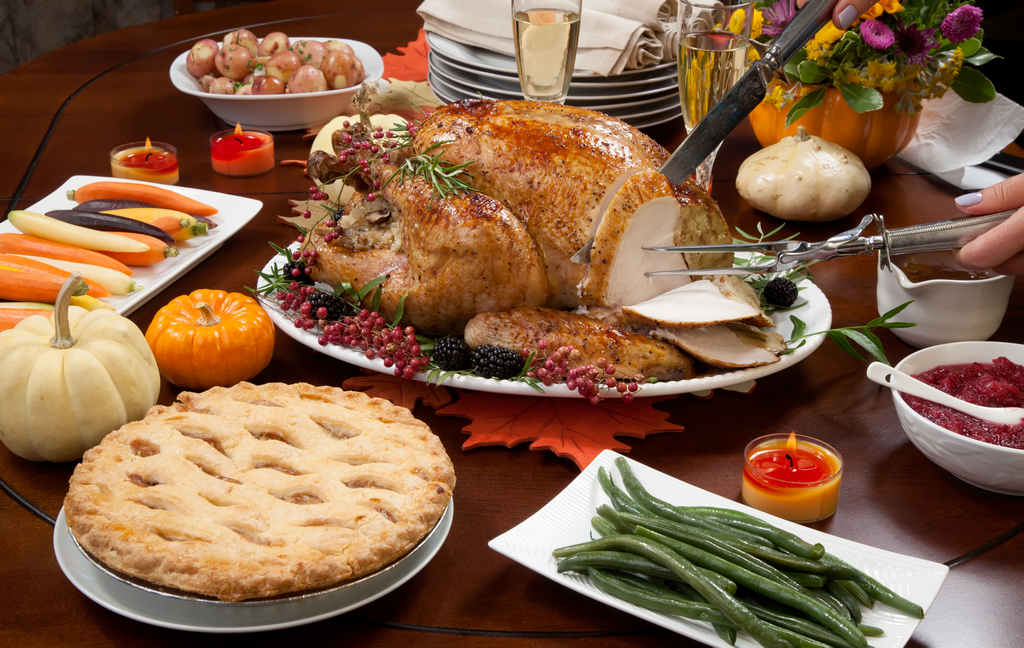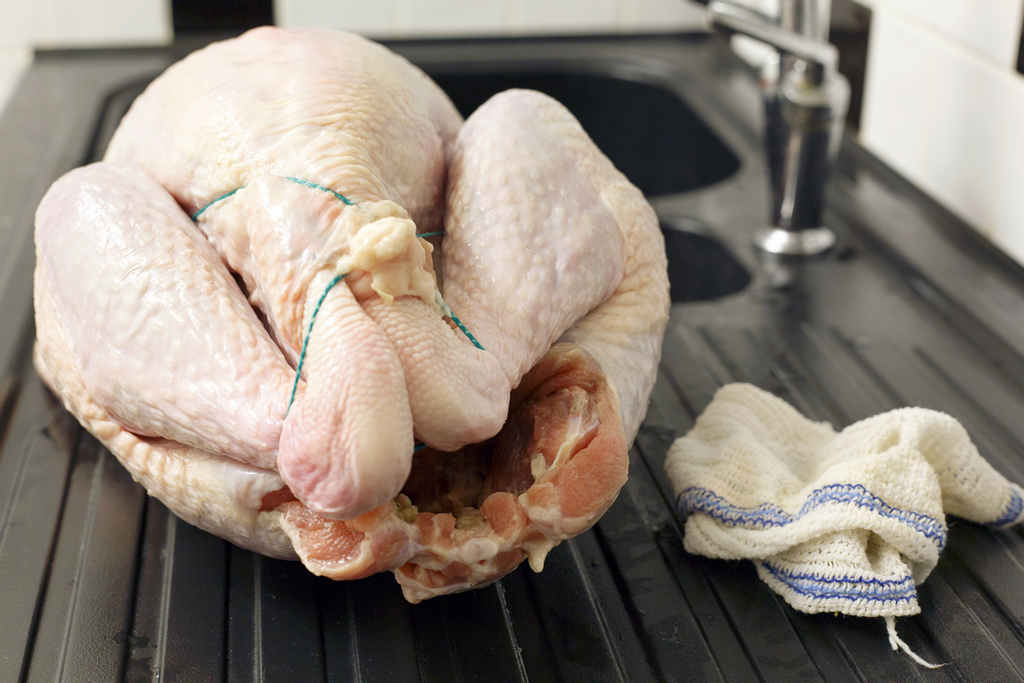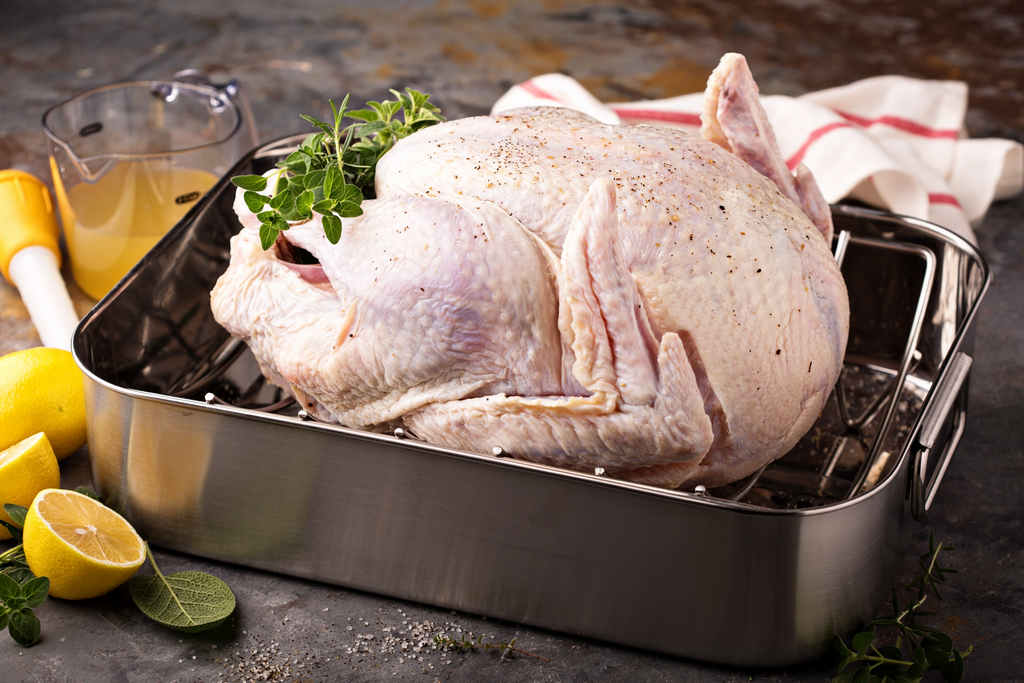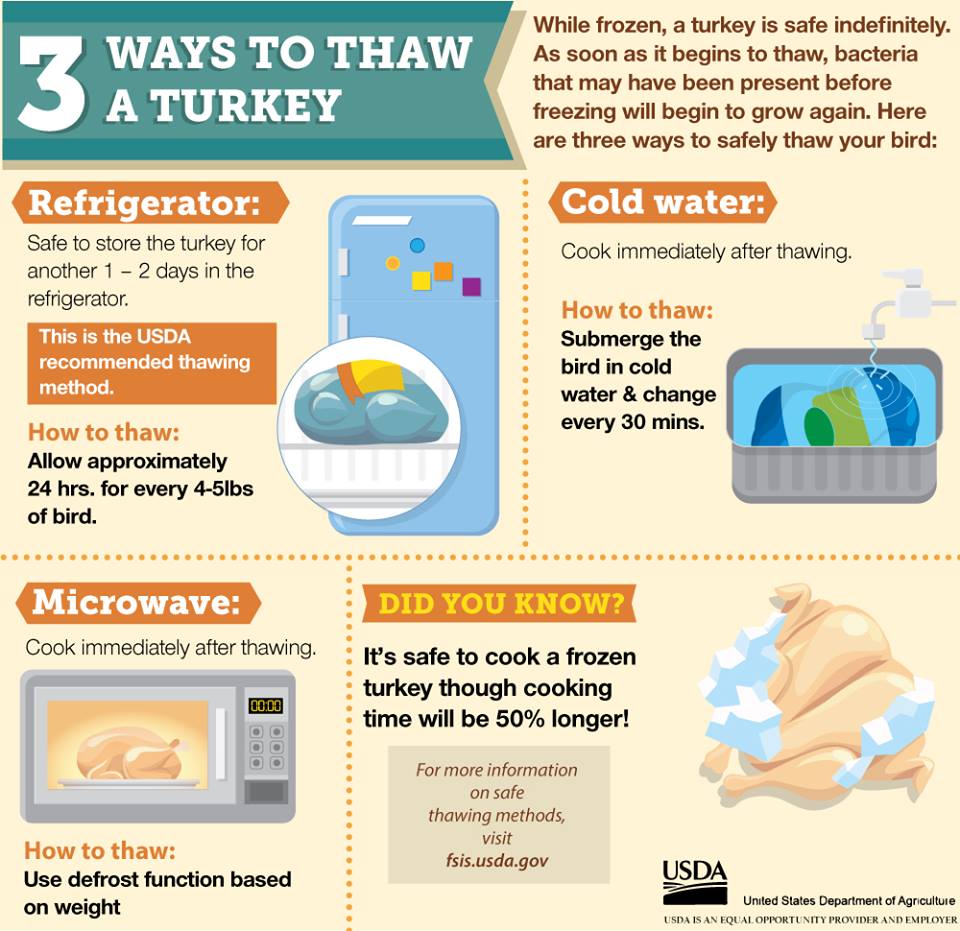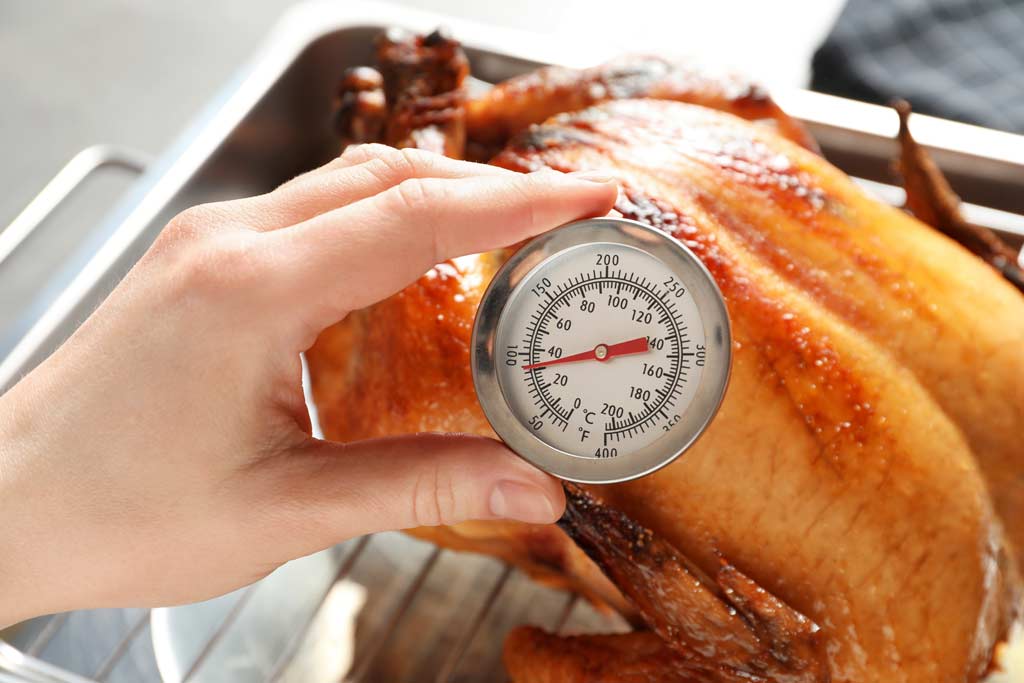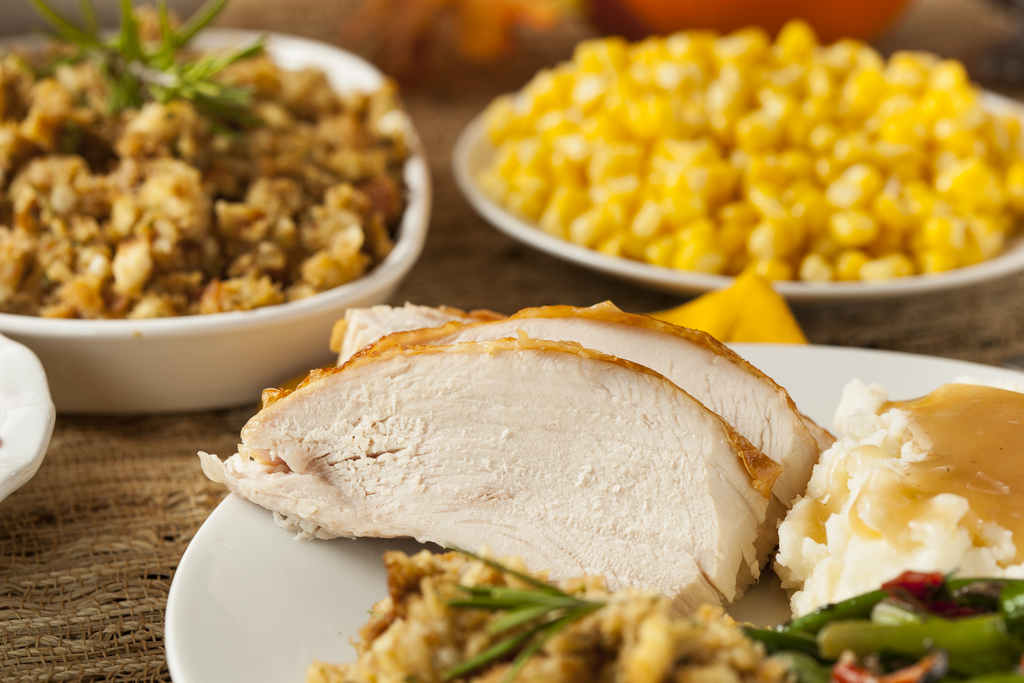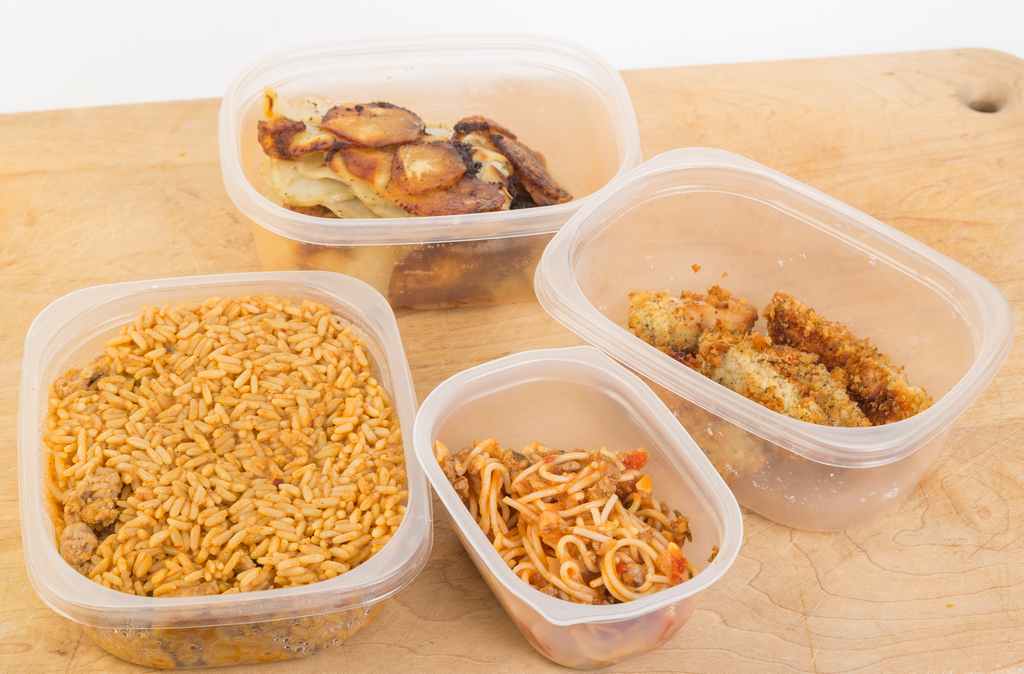The holiday season is beginning, so now is the time to start thinking about when to buy a fresh turkey and how to properly and safely prepare the entire meal.
All turkeys, like other fresh meat and poultry, are highly perishable and care needs to be taken when purchasing, storing, preparing, and cooking them to avoid foodborne illness.
Turkey Statistics
Turkey consumption has nearly doubled over the past 25 years. According to the National Turkey Federation, 88% of Americans eat turkey on Thanksgiving. And the amount of turkey consumed is staggering: 46 million turkeys are eaten each Thanksgiving, 22 million on Christmas, and 19 million turkeys on Easter.
- Learn about foodborne pathogens, cross contamination, cold and hot food safety, and best practices to prevent foodborne illness.
- Food Manager ANSI Certification: $99.00 - Valid in all States
- Food Handler Training: Only $7.00!
- 10% OFF: Enter Promo Code "train10off" at Checkout
Fresh or Frozen Turkey?
There is no significant difference in quality between a fresh or a frozen turkey; the choice is based on personal preference or time restraints.
For fresh turkeys, the USDA recommends to purchase a fresh turkey within 1-2 days of when to be cooked and served. Fresh turkeys, like other fresh meat and poultry, are highly perishable and care needs to be taken when purchasing and storing them to avoid spoilage.
Don’t Wash the Raw Turkey
According to a food-safety survey conducted by the FDA, 68% of people wash a whole turkey before cooking it. However, the USDA does not recommend washing raw meat and poultry before cooking because it can spread bacteria up to 3 feet around the sink.
Cooking meat and poultry to the right temperature kills any bacteria present, so washing meat and poultry is not necessary.
Safely Thaw Your Turkey
If finding the right-sized bird is critical, buy a frozen one early & save yourself the trouble of running from store to store later during Thanksgiving week. Keep the turkey frozen until you’re ready to thaw & cook it!
A frozen turkey is safe indefinitely, but a thawing turkey must defrost at a safe temperature. When the turkey is left out at room temperature for more than two hours, its temperature becomes unsafe as it moves into the danger zone between 40°F and 140°F, where bacteria can grow rapidly.
Thaw turkeys in the refrigerator, in a sink of cold water that is changed every 30 minutes, or in the microwave. Never thaw your turkey by leaving it out on the counter. Bacteria can multiply rapidly at room temperature, so don’t thaw foods on the counter!
The easiest way to get that frozen bird thawed is in the refrigerator. It will defrost at a rate of about four pounds per day, so the average 16-pound turkey could take at least four days to completely thaw! If you fail to give your turkey enough time to thaw, it will cook on the outside, but the inside will be super raw.
Check out all the ways to thaw a turkey below in the USDA infographic:
Turkey – Cooking to Proper Internal Temperature
To make sure the turkey has reached a safe internal temperature of 165°F, check by inserting a food thermometer into:
- the thickest part of the breast;
- the innermost part of the wing; and
- the innermost part of the thigh.
Turkey pop-up timers only check the internal temperature in one area and are not recommended.

Roasting a Basic Turkey
The duration of roasting a turkey depends on a number of things, including whether or not the bird is stuffed, how big it is, and if it has been thawed.
Follow simple steps to properly roast a turkey. First, preheat oven to 325°F. Next, place thawed turkey in a large roasting pan, breast side up, and cover with a piece of aluminum foil.
Bake turkey using the chart below. Remove foil during last hour of cook time to brown. Cook until meat thermometer inserted into the thickest part of the breast, wing, and thigh reads at least 165°F.
| Size of Turkey | Unstuffed | Stuffed |
| 10-12lbs | 3 – 3 ¼ hours | 3 ½–3 ¾ hours |
| 12-16bs | 3 ¼ – 3 ¾ hours | 3 ¾ – 4 ¼ hours |
| 16-20lbs | 3 ¾ – 4 ¼ hours | 4 ¼ – 4 ¾ hours |
| 20-24lbs | 4 ¼ – 4 ¾ hours | 4 ¾ – 5 ¼ hours |
After the turkey is removed from the oven, let it rest for minimum 30 minutes. The juices need to resettle into the meat.
Turkey Stuffing – Cook Separate
Is it safe to cook the stuffing inside a turkey?
The USDA recommends that the entire turkey is cooked to 165°F – including the stuffing! If the stuffing doesn’t reach 165°F, the bacteria won’t be killed off and could cause foodborne illness. Cooking stuffing inside the turkey to 165°F often means overcooking the bird – so it’s best to cook the stuffing separate.
Store Leftovers Promptly
One of the critical factors in controlling bacteria in food is controlling temperature. Bacteria grows rapidly between 40°F and 140°F, cut the turkey off the bone and refrigerate it within 2 hours of the turkey coming out of the oven.
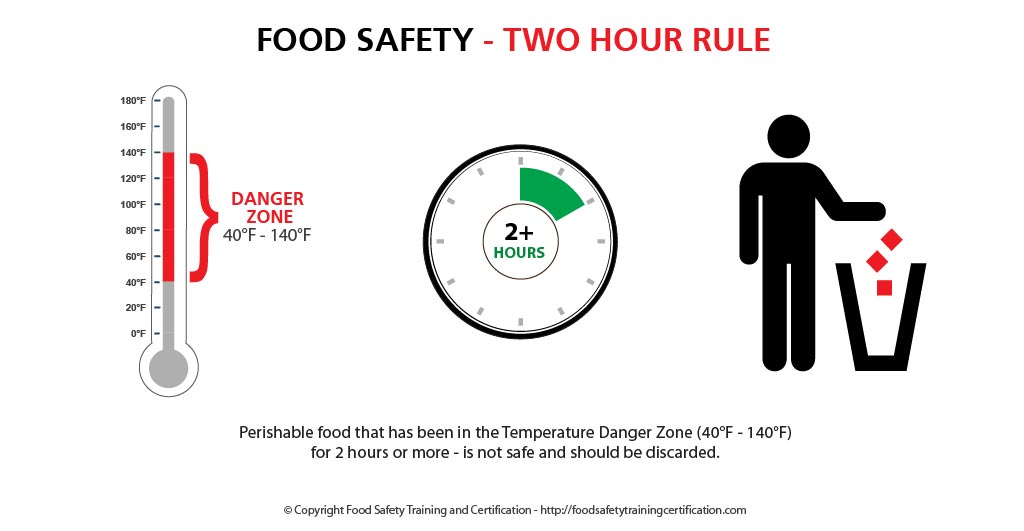
Leftovers will last for four days in the refrigerator, so if you know you won’t use them right away, pack them into freezer bags or airtight containers and freeze. For best quality, use your leftover frozen turkey within four months.
Summary
All turkeys, like other fresh meat and poultry, are highly perishable and care needs to be taken when purchasing, storing, preparing, and cooking them to avoid foodborne illness.

